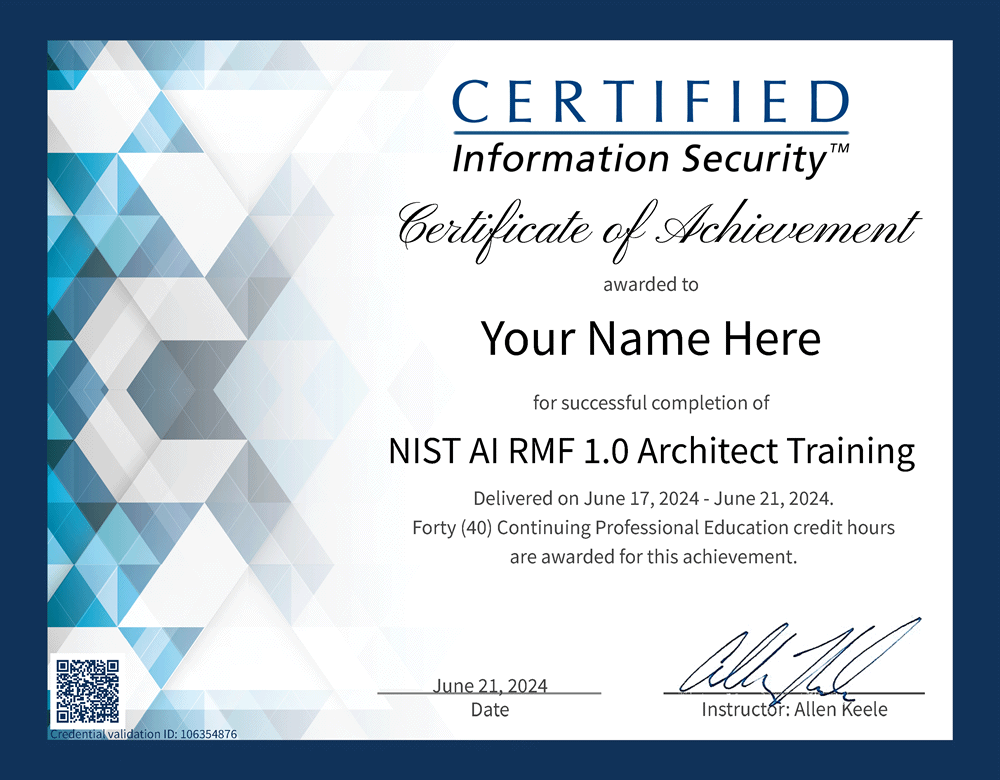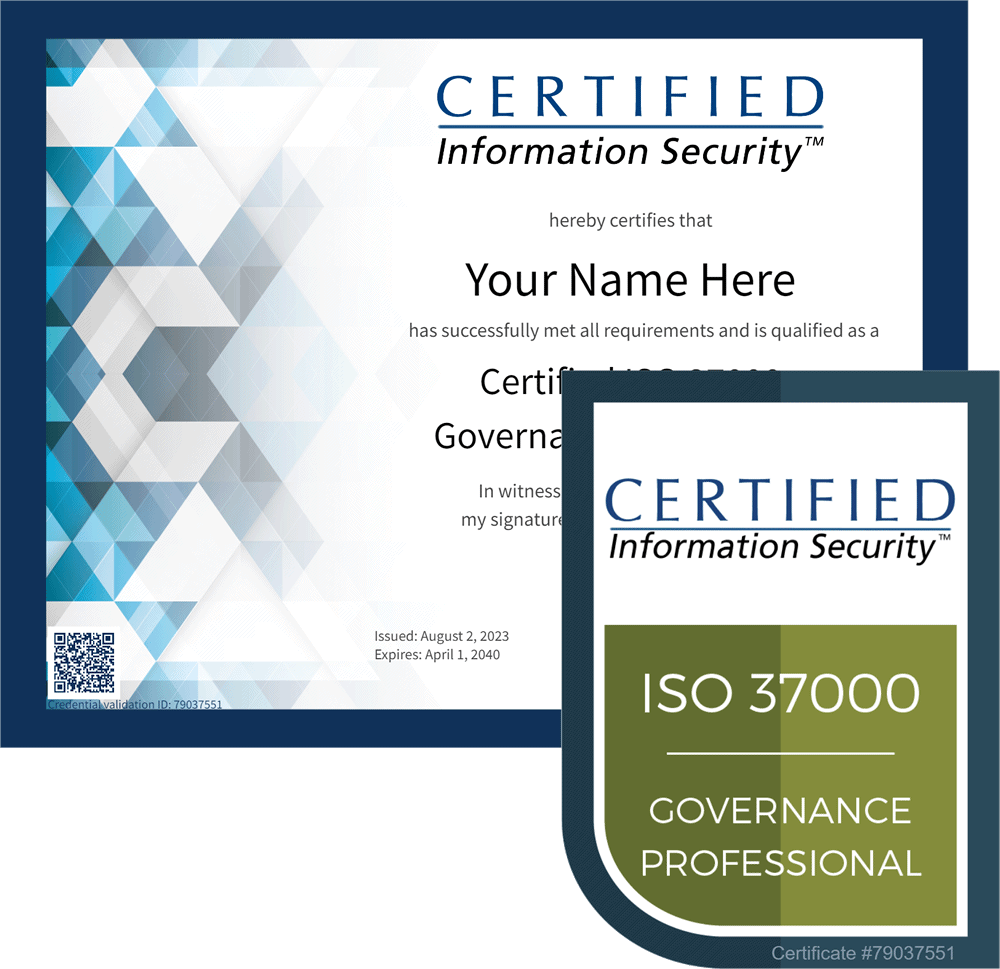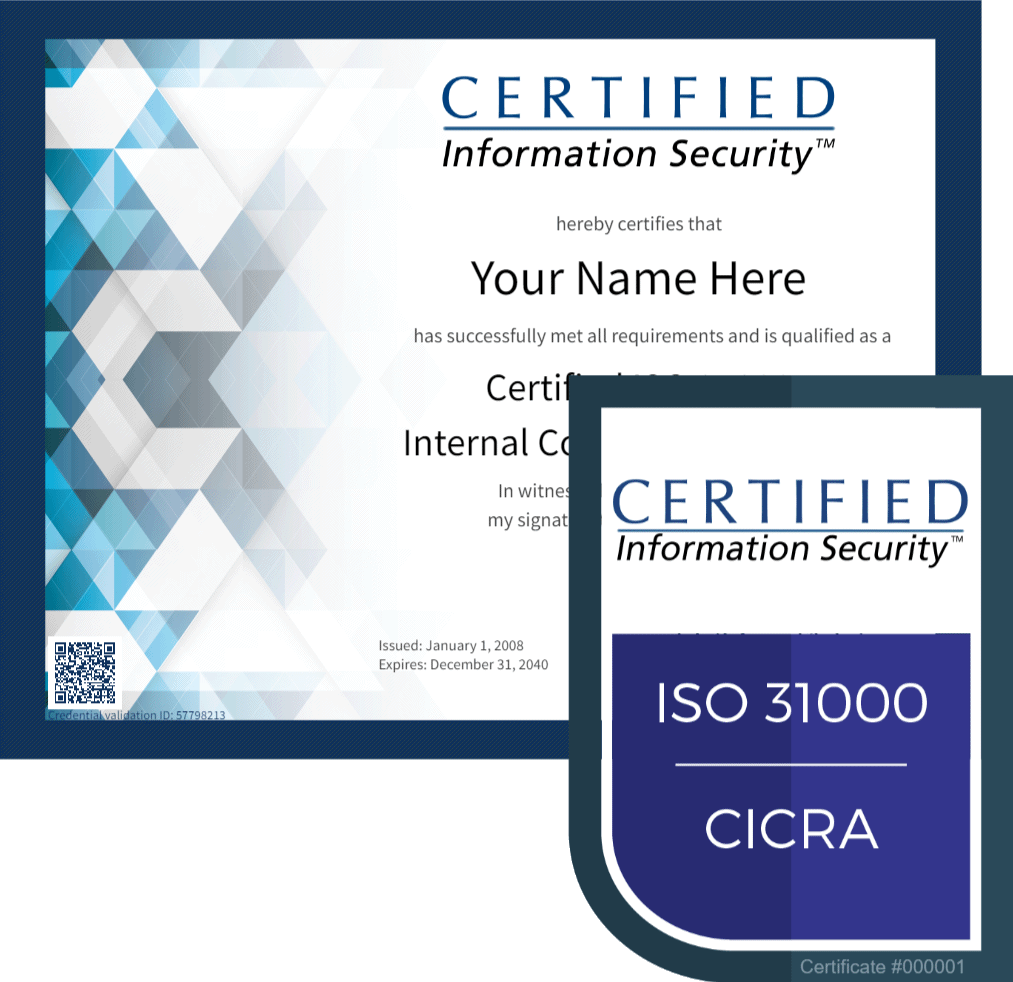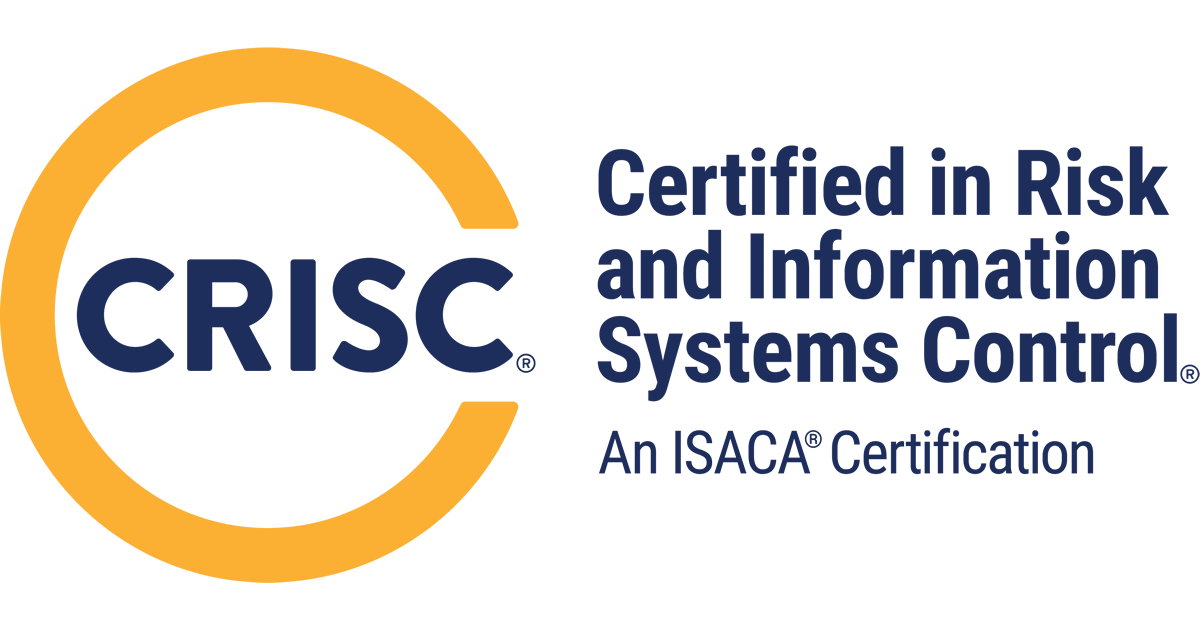|
Get ahead. Get the online training, certification programs, and policy tool kits |
NIST AI RMF 1.0 Architect Training (60 Days)
SKU RM102. Learn how to use the NIST Artificial Intelligence Risk Management Framework 1.0 to develop and integrate AI risk management into the organization's broader Enterprise Risk Management. This course fulfils the training requirement for NIST AI RMF 1.0 Architect certification eligibility. This course subscription provides 60 days of access. (In English). As this is a subscription-based course, no permanent download of course materials is supported. This subscription does NOT auto-renew.
Sales price $799.95
Discount
Total discount:
Description
| Terms of Service: Unlimited online utilization of this course is provided for a single user for 60 days in duration from the time of purchase according to the terms of Certified Information Security's End-User License Agreement. The subscription expires 60 days after purchase. Subscription time is not banked, and cannot be "frozen", deferred, or re-scheduled. As this is a subscription-based course, no permanent download of course materials is provided. This subscription does NOT auto-renew. |
Manage AI risk according to the NIST AI RMF Framework and Playbook
What you'll get...
NIST AI RMF expert Allen Keele presents 743 slides of video-narrated content providing thorough coverage of NIST AI RMF 1.0. Understand the NIST AI RMF's four Core Functions, 19 Categories, 76 Subcategory desired outcomes (objectives), and its 460 recommended implementation actions (tasks).
The AI RMF Playbook!

- Introduction to AI risk management and related frameworks (90+ slides)
- Addresses how organizations can frame the risks related to AI and describes the intended audience. AI risks and trustworthiness are then analyzed, outlining the characteristics of trustworthy AI systems.
- Core Function 1: Governing AI risk management (140+ slides)
- Core Function 2: Mapping AI risks (140+ slides)
- Core Function 3: Assessing and measuring AI risks (200+ slides)
- Core Function 4: Managing AI risks (90+ slides)
The learning approach
Within each of the four Core Functions, each Function’s category is broken down into individual lessons explaining particular desired outcomes and objectives (subcategories), followed by NIST's recommended implementation actions ad relevant documentation considerations.

![]()
All reviews
08-17-2025
Your review
Concise lessons, checklists, and scenario drills that translate AI RMF into day-to-day controls, TEVV, and evidence, easy to apply across teams
Show more
0 of 0 people found the following review helpful
01-31-2025
Your review
I highly recommend this certification for anyone working in Enterprise Risk Management or for those interested in learning about AI Governance. This well curated course covers all the topics from NIST's AI RMF Framework and provides additional context about the usage, risks, impacts, and opportunities of AI in Organizations. Allen Keele is a fantastic instructor. Thank you!
Show more
0 of 0 people found the following review helpful
12-19-2024
Your review
The NIST Risk Management Framework (RMF) provides comprehensive guidelines for managing and mitigating AI risks. It's definitely a valuable certification to pursue.
Show more
0 of 0 people found the following review helpful
Reviews
There are yet no reviews for this product.



















